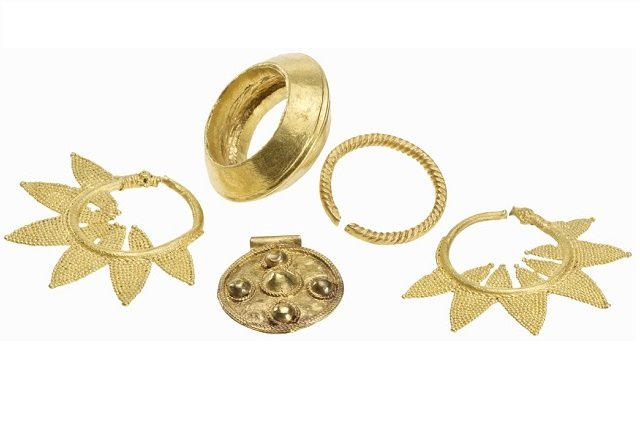Jewelry
- Object Name
- Jewelry
- Culture / Site
- Excavated at Tumulus 7, Durbi Takusheyi, Nigeria
- Medium
- Gold
- Date
- 13th/15th century
- Dimensions
- Largest maximum width 1.25 in
- Credit Line
- National Commission for Museums and Monuments, Abuja, Nigeria. Photograph by René Müller
- Section
- The Long Reach of the Sahara/The Central Sudan and Durbi Takusheyi
- Description
These five pieces of solid gold jewelry were found in a large Mamluk brass bowl from Egypt or Syria, buried beside an individual of high status who also wore ivory, silver, and copper-alloy bracelets, a carnelian necklace, and a richly woven beaded belt. The gold-working techniques manifested in the gold jewelry at Durbi Takusheyi point to trade connections across West Africa. The circular pendant, with its five dome-shaped cabochons, is reminiscent of techniques used to make a pendant known as the Rao Pectoral from Senegal, while the earrings recall tenth-century Amazigh silverwork.
